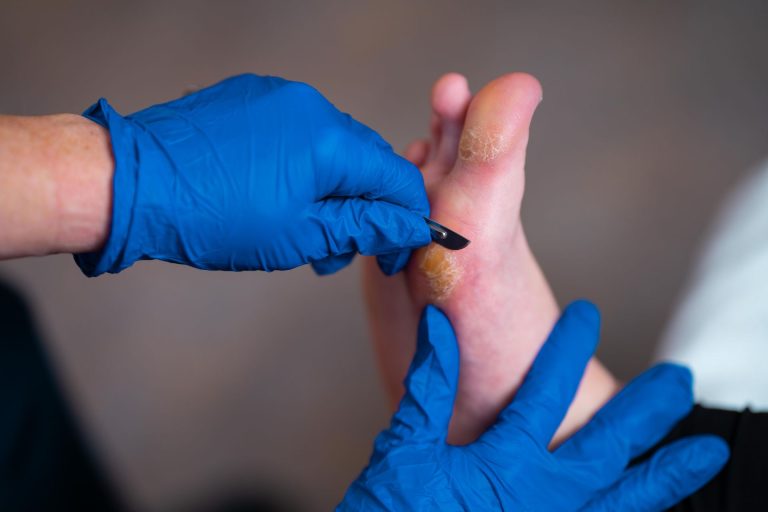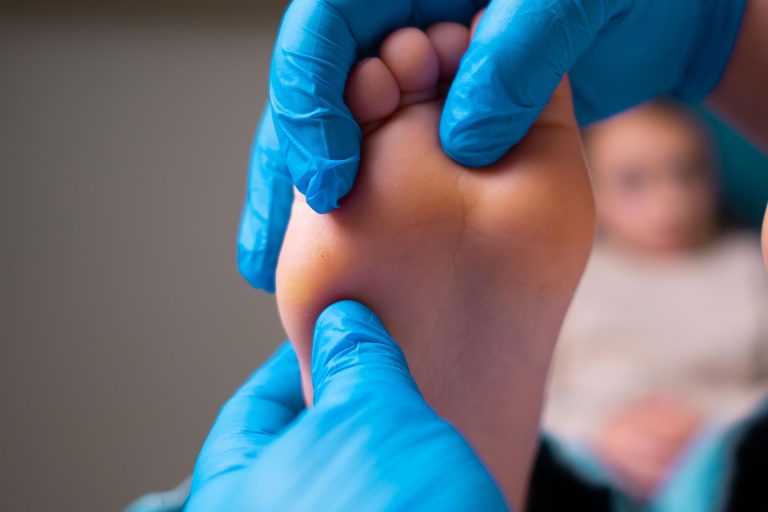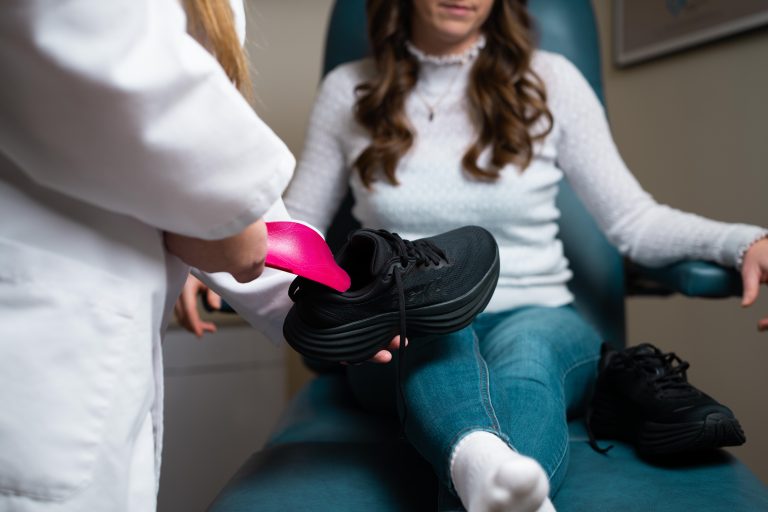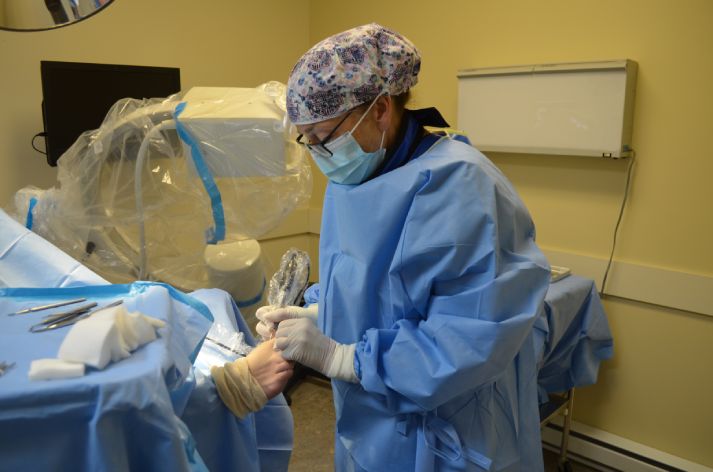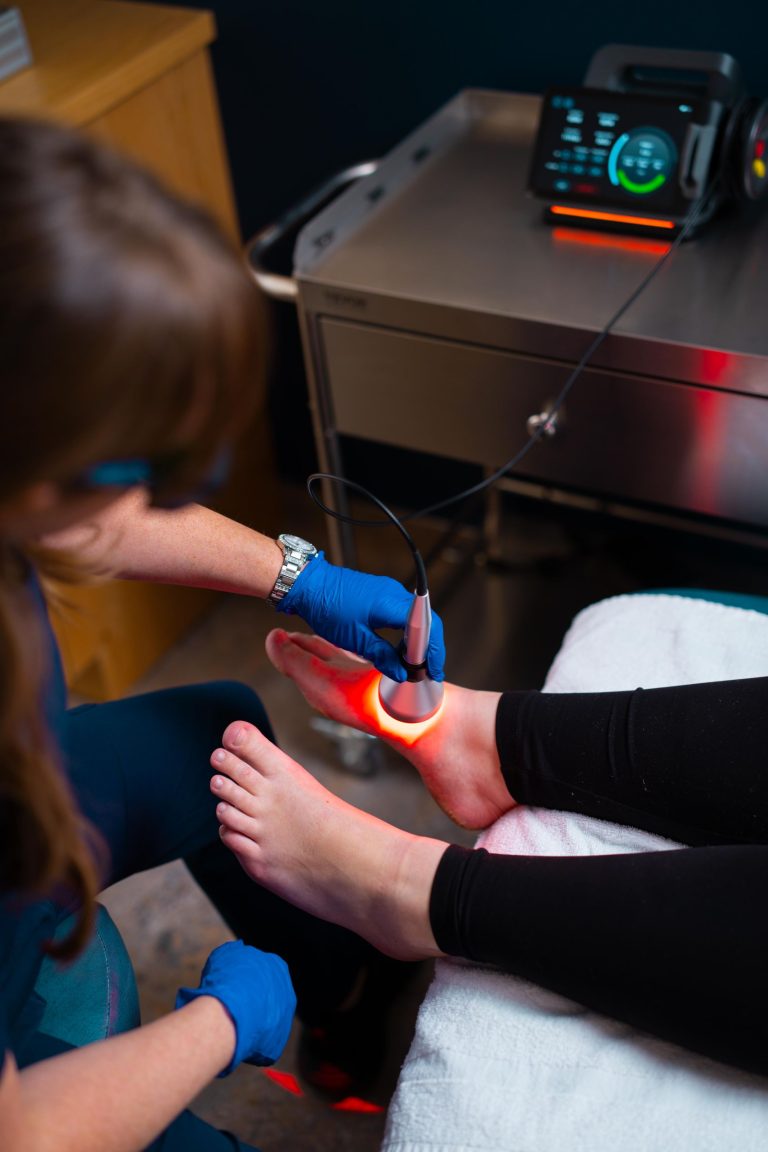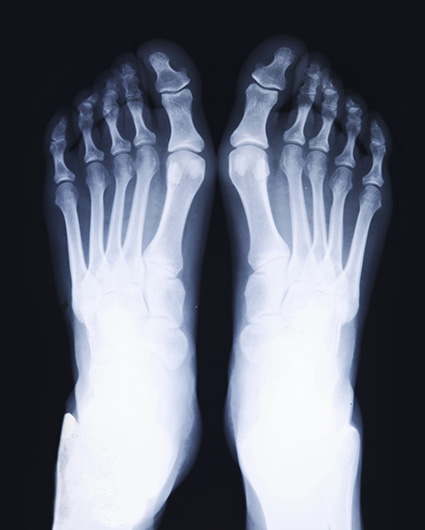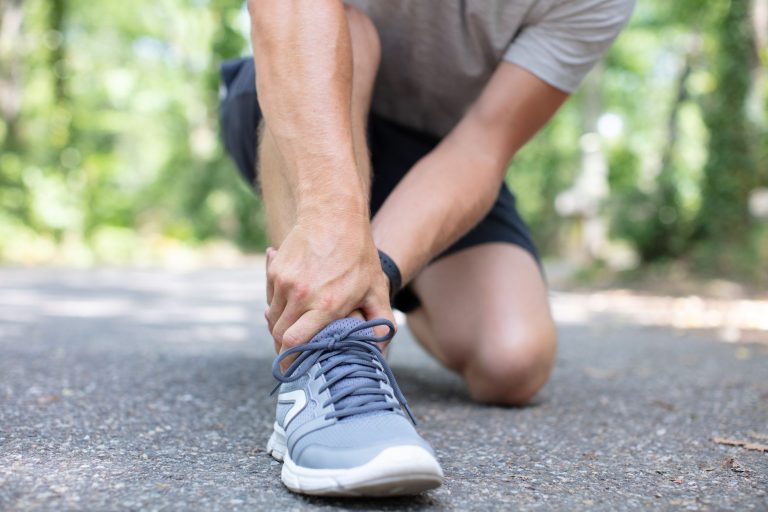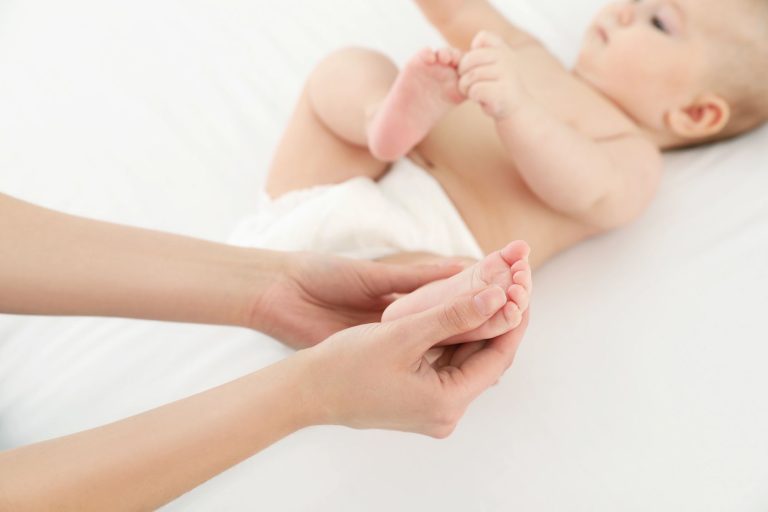Foot care in Outaouais
Podiatric treatments, offered by Clinique podiatrique de l’Outaouais, include nail and skin care. Our podiatrists are authorized to evaluate the types of calluses and nail problems, and to determine their cause to recommend the appropriate treatments. To treat nails and skin properly, our podiatrists use effective, safe and sterilized instruments.
Did you know?
In the course of an average day's walking, your feet are subjected to forces totaling hundreds of tons - the equivalent of a fully loaded cement truck.

Corns and Calluses (Hyperkeratosis)
Hyperkeratosis is often due to excessive friction and pressure on the skin. These may be due to ill-fit shoes, bone extensions (hammer toes, bunions) or biomechanical overloads on certain parts of the foot. Then, the surface layer of the skin is too much stimulated and thickens.
The thickening is sometimes diffuse (calluses or horns), sometimes localized (corns). The corns can make you feel like walking on a small rock, which can be very painful. Corns located between the toes are called “soft corns”.
Diabetic person and people with peripheral vascular problems are especially at risk of complications following hyperkeratosis. They are encouraged to see our podiatrists, at Clinique podiatrique de l’Outaouais, regularly to prevent injuries or complications.

Mycotic Nails
Onychomycosis is a fungal-type micro-organic infection of the nail. Sometimes, we notice yellowing, separation and thickening of the plate on one or several nails. Progression is often slow and rarely painful.
However, all thickened and yellowed nails are not necessarily affected. Other factors may change the look of the nails, like psoriasis, lichen planus, severe or repeated trauma and melanomas, although these are rare.
If you notice that the look of your nails has changed, you should see our podiatrist at Clinique podiatrique de l’Outaouais to get a diagnosis and a proper treatment plan.
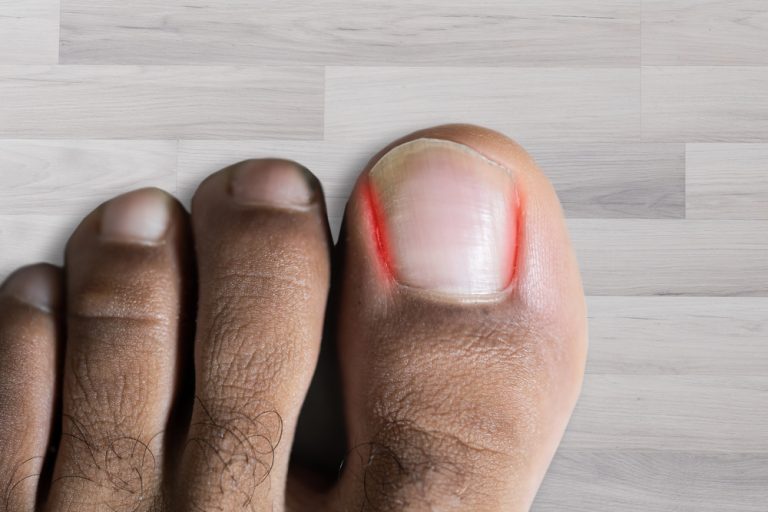
Ingrown Toenails
Also known as onychocryptosis, this problem particularly affects the big toe. When the nail digs into the surrounding skin, it causes swelling, redness and pain. If left untreated, the ingrown toenail can become infected or cause a granuloma to form, aggravating the pain. Depending on the case, an ingrown toenail can be controlled with regular foot care at the clinic. Surgery may also be recommended.

Cracks
We often see cracks appearing at the heels. The thickening and drying of the skin lead to loss of elasticity. As we repeatedly put a lot of pressure on our feet, sometimes the skin cracks. Therefore the excess horn should be removed and emollient creams should be applied daily.
Our podiatrists can prescribe different creams to help remove stubborn cracks, and will usually recommend foot care with debridement of the callus every two or three months. The use of pumice stone at home can be advised depending on patients, once a week.
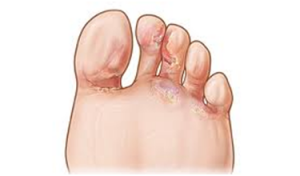
Athlete's foot
Athlete’s foot is a fungal infection of the foot’s skin that is sometimes called “tinea pedis”. The skin of the feet is especially sensitive to this infection because the warm and humid environment inside the shoes often helps fungal growth.
Between the toes, we notice maceration and cracking of the skin, as on the plantar surface, we see small red dots and plates of skin that peels and itches. Infected people may complain of burning sensations or itchy feet.
As there are other conditions with similar symptoms (eczema, psoriasis, erythrasma, etc.), a good diagnosis is essential. Then the podiatrist can prescribe the proper cream to treat the condition and prevent the infection from expanding to other areas of the feet or nails.

